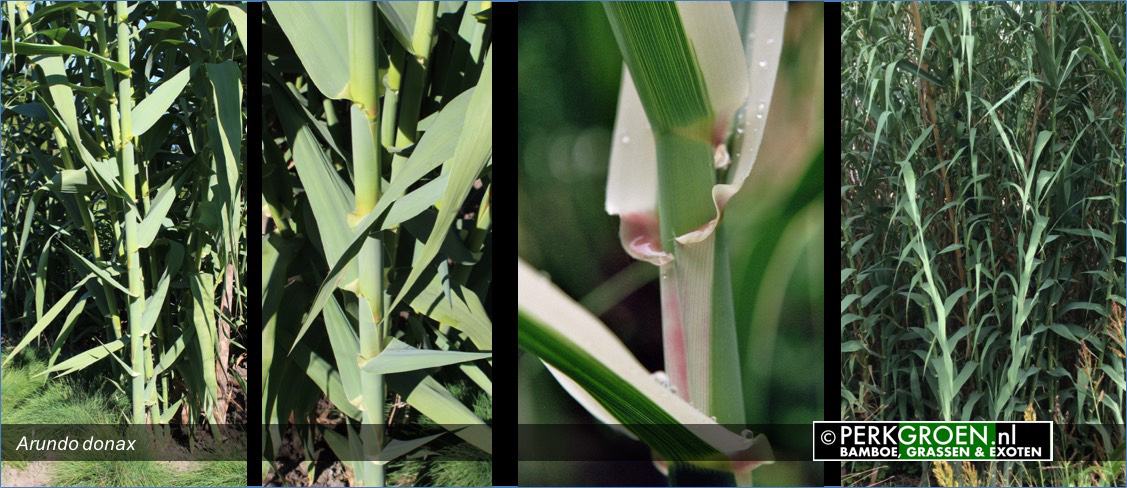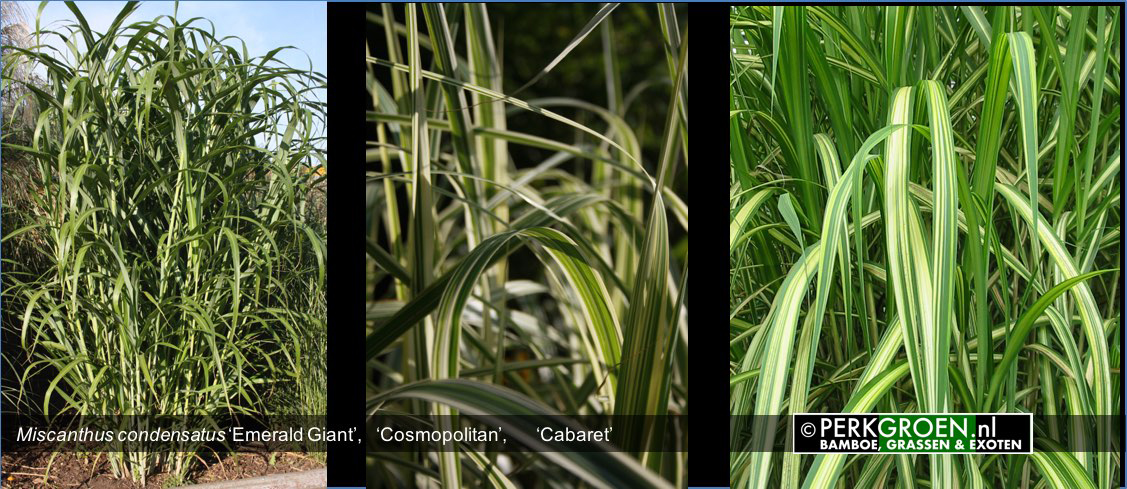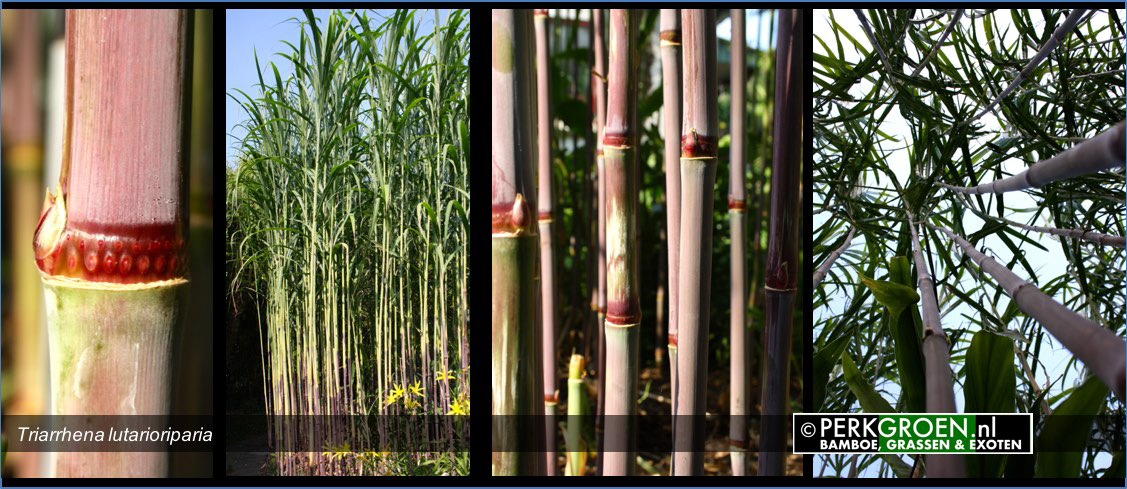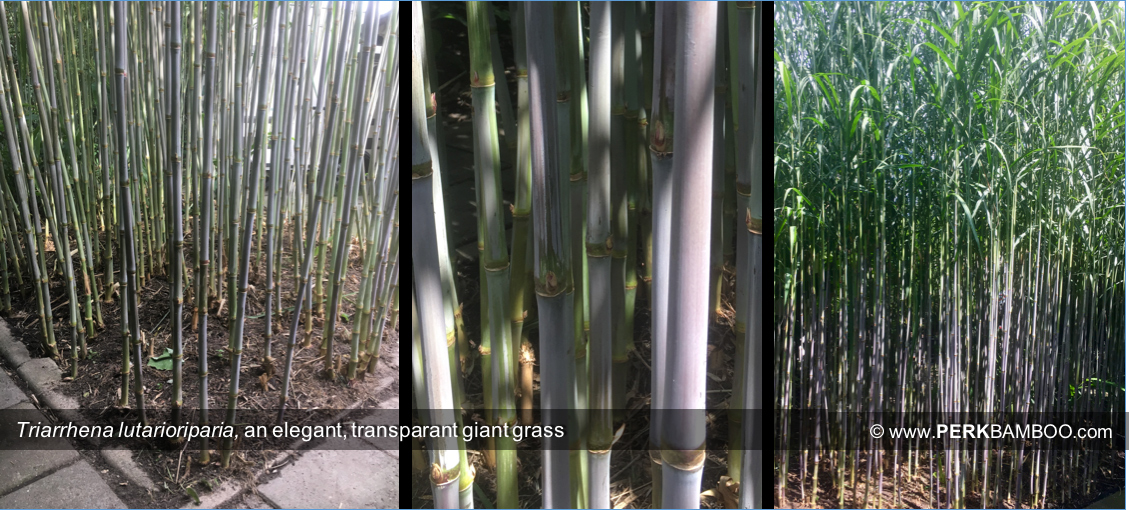GIANT GRASSES
Besides evergreen giant bamboos there are some non-evergreen giant ornamental grasses that are worth mentioning and might be interesting for landscaping applications.
Arundo donax (Arrow Reed, mammoth grass) is a sugarcane-look-a-like grass which resembles bamboo, but falls under the deciduous grasses. We collected our clone in 1992 on the north side of its distribution range in central France. The giant Arundo donax provides a dramatic exotic effect with beautiful blue-green stalks thick and wide, long pendulous bluish-green leaves. The woody stalks loose their leaves during winter, but in the subsequent spring leafy branches develop from the nodes. For optimal growth Arundo requires a lot of water and fertilizer during the growing season. Our summers are too short for flowering. Arundo grows every season between 4-6 meters in height.
Arundo donax 'Peppermint Stick' is one of the best hardy variegated selections that also achieves a respectable height of 3-5 meters. Very nice as a solitary combined with dark-leaf plants. Sometimes, there are at the nursery cultivars or other related species like Arundo available Arundo plinii and Arundo karka.

Miscanthus giganteus 'Aksel Olsen' is a very significant clumping ornamental grass, which is also known as elephant grass. The growth height is 2.50 m to 4,00+ including plume. "Aksel Olsen‘ has long, broad leaves with a silver midrib and grows upright. It blooms only after a hot summer in October with large copper red plumes which later fade to silver. The foliage undergoes a pretty autumn coloration. In addition, this ornamental grass a beautiful winter picture with straw yellow culms and silvery plumes that winter reed vegetation imagines. Miscanthus prefers a light spot and can also be used in planting containers. After winter the old foliage can be pruned back to ground level. This plant is international in focus as biomass crop. Yellow-green striped variety Miscanthus ‘Jubilaris’ has the same growth characteristics, but the variety is not always stable and can sometimes mutate back to the green form.
Miscanthus condensatus is another big, broad-leaved species. Perhaps more graceful than giganteus. Growth is more compact, rigid and leaves looks firmer. The green form is available under the name Miscanthus condensatus 'Emerald Giant'. There are two variegated cultivars. The variegated-striped form Miscanthus condensatus 'Cosmopolitan'. A graceful plant with green dominating the white lined leaf. The yellow-green-striped selection Miscanthus condensatus 'Cabaret'. Both variegated cultivars remain somewhat smaller relative to the green form. It's a nice solitary species with a large inflorescence in late autumn.


Triarrhena lutarioriparia (Lutario, Chinese giant reed, China). Triarrhena is a new unknown giant grass which achieves a height of 6-7 meters in one season! In China, this plant is important for the paper industry but in Europe but completely unknown. It has gorgeous purple culms under the leaf sheaths. The long, ribbon-like leaves with silver midrib hang over gracefully. Later in the season this plant develops branches at the nodes. It is an airy, transparent plant that despite its height. Note the root expansion because Lutario grow on rhizomes (plant within rhizome barrier). Bloom, we have not (yet) observed. After winter cut the old foliage to the ground.



